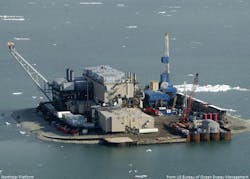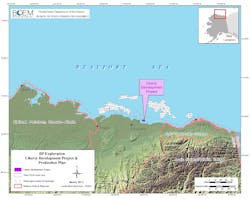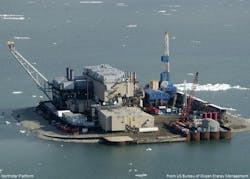BOEM moves forward in review of Hilcorp’s Liberty prospect
Hilcorp Alaska LLC has officially submitted its development and production plan (DPP) for the Liberty prospect to the US Bureau of Ocean Energy Management (BOEM).
The proposed facility would be built on a manmade gravel island in federal waters about 5 miles offshore Alaska in the Beaufort Sea to develop hydrocarbon resources on the US Outer Continental Shelf.
The site has been evaluated and explored by industry for more than 30 years. BP PLC in 1997 drilled the Liberty discovery well, and in 2014 sold to Hilcorp its 50% interest in Liberty and Milne Point fields and 100% interest in Northstar and Endicott fields (OGJ Online, Apr. 22, 2014). The deal included BP’s interests in oil and gas pipelines associated with these fields.
BOEM will now move forward in its review process, initiating a 60-day period for the public to review and comment on the DPP, which describes development and production activities proposed by an operator for a lease or group of leases.
The description includes the timing of activities, information concerning drilling methods, the location of each proposed well or production platform or other structure, and an analysis of both offshore and onshore impacts that may occur as a result of the plan’s implementation.
Hilcorp proposes building the gravel island in 19 ft of water to support a work surface of 9.3 acres for the drilling facility, which would be similar to the company’s Northstar production facility operating since October 2001. It lies in 40 ft of state waters and 31 miles to the northwest of the proposed Liberty Island location, encompassing a work area of six acres.
Gravel islands similar to the one proposed have been built in Alaskan waters to support other production facilities at Oooguruk and Nikaitchuq fields in the Beaufort Sea.
As part of its regulatory program, BOEM will issue a notice of intent to prepare an environmental impact statement (EIS) on Sept. 25. This EIS will analyze the DPP’s potential environmental effects, and will provide opportunity for public comment.
Environmental analysis of the DPP is expected to take several years and will be closely coordinated with numerous federal and state agencies and consultations with appropriate federally recognized tribes. BOEM will not make a decision to approve, disapprove, or require modifications to the DPP until after the completion of the EIS.


